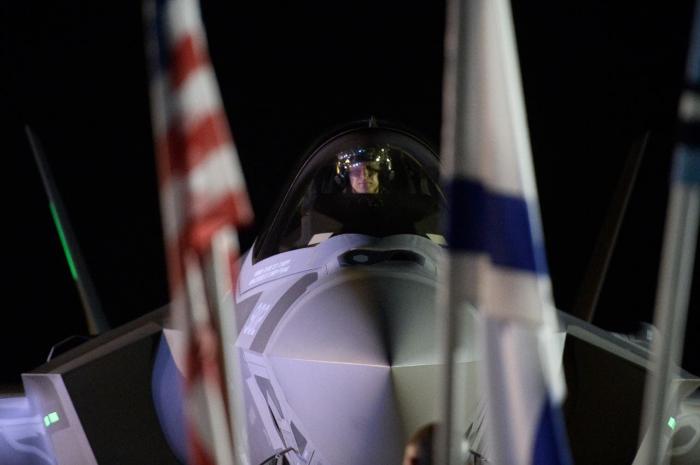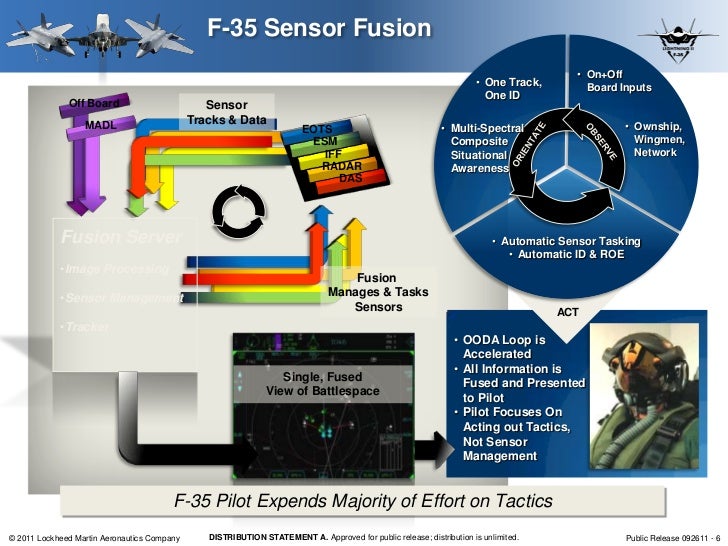The F-35 is a supercomputer in the sky
Despite all its flaws, the F-35 will give Israel the ability to maintain air superiority over all its neighbors and further afield, and allow it to attack where it has never attacked before.
To the joy of many in Israel’s defense establishment, Israel’s most advanced piece of weaponry, a pair of F-35 stealth fighter jets, landed in Nevatim Air Base late Monday after a six-hour delay.
But the jet fighters, which had been grounded in Italy due to fog, are only the beginning, with Israel expecting to receive a total of 50, two full squadrons, by 2022.
“Israel never had a stealth fighter before the F-35; it is a huge jump and will be a huge challenge,” Brig.-Gen. (res.) Abraham Assael told The Jerusalem Post before the planes landed, adding that “it is a very interesting time for our air force,” as the F-35 “is more like a system than a plane, and it will take time to fully understand the system.”
The plane, he said, “is an enigma,” and after years of development of the most expensive plane in history, the advanced jet will, according to senior Israeli officials, give Israel complete air superiority in the region for the next 40 years. Lt.- Col. Yotam, the squadron commander of the Adir, as the Israeli version of the F-35 is called, added that the Adir was purchased “in order to attack places that we are not always able to attack.”
The fifth-generation jet “is a quantum leap in relation to the combat aircraft we have today,” according to Yotam, designed to fly longer and faster than most fighter jets. Its extremely low radar signature allows it to operate undetected deep inside enemy territory, evading advanced missile-defense systems like the Russian-made S-300s and S-400s deployed both in Syria and Iran.
Those missile-defense systems pose an “obvious risk to Israel’s air force, and we cannot ignore their presence in the area,” Assael said.
But the need for the jet was also a subject of fierce debate in the government, where some wondered whether such an expensive jet was necessary, questioning whether Israel could have spent the $100 million plus per plane on hardware that could be more relevant to the current threats facing Israel.
The next conflict that Israel will face against Hamas or Hezbollah is likely not going to be a full-fledged war, and the F-35 will likely not need to use its stealth technology to strike targets, unless Hezbollah gets its hands on Russian-provided S-300 or S-400 surface-to-air missiles in Syria, an unlikely scenario.
But Hezbollah is Israel’s most dangerous enemy, known to have a massive arsenal of advanced weaponry, given to it by its Iranian patrons, and technological advances along with battlefield experience gained by the group in Syria.
Another terrorist group on Israel’s borders, Islamic State, continues to fight against Western air and ground forces relatively successfully, downing aircraft over Syria and Iraq. While Islamic State has been losing significant amounts of territory, its branch in the Sinai Peninsula is their strongest, having killed hundreds of Egyptian security forces, downed a Russian passenger plane, fired rockets toward Israel and released videos showing terrorists with man-portable air-defense systems.
But it’s not only terrorist groups that pose a threat to Israel. According to a senior IDF officer, the military buildup in the Middle East is a significant problem. “We see arms deals totaling $200 billion in weapons in the Middle East. We are a small country with a lot of strategic targets, and that is clear to everyone.”
In addition to the S-300s and S-400s on Israel’s northern border, to the south, Egypt has signed a deal with France to buy 24 Rafale fighter jets. The Saudis and Qataris have also bought the latest, most sophisticated F-15s, and Iran has expressed interest in purchasing Russian- made Sukhoi Su-30SM multi-role fighter jets.
According to Yiftah Shapir of the Institute for National Security Studies in Tel Aviv, it was crucial for Israel to refurbish its fleet of aircraft, as the IAF currently relies on the F-15 Baz and F-16 Barak.
Israel received the first F-15s in 1977 and the first F-16s in 1980, and the first squadron of F-15s are due to be pulled from service next year.
“These planes have now flown for close to 40 years,” Shapir told the Post, and the IAF has chosen the F-35 to replace them.
“If you think about our security, we are currently relying on an airplane that is 40 years old. And since we get foreign military aid from the United States, we cannot even think about buying planes from somewhere else.”
Because Israel buys its aircraft using the Memorandum of Understanding signed between Jerusalem and Washington, there was no option to consider buying cheaper jets from European countries, and the possibility of buying from Russia or China is out of the question.
As Israel awaited the arrival of the jets, US President-elect Donald Trump said that he would completely reevaluate the costly aircraft program, once he takes office on January 20.
Taking to Twitter, Trump said the cost of the Lockheed Martin program was too high and that billions would be saved once he takes office.
“The F-35 program and cost is out of control. Billions of dollars can and will be saved on military (and other) purchases after January 20,” Trump posted.
And if Trump cuts the F-35 program, the cost of the plane would skyrocket, and so would Israel’s bill.
The F-35 is a controversial plane with an expensive price tag of close to $100m. per plane, delays and at least 27 serious safety failures as of the end of October 2015, including one where flaws in the plane’s coolant system led to the United States Air Force grounding the jet a mere two months after they were declared combat ready in August. Eight of the planes grounded by the USAF belong to Israel.
The jet had also been banned from taxiing, taking off or flying within 25 miles (40 km.) of known lightning strikes, because of the possibility of an explosive mixture of fuel vapor and oxygen collecting in the fuel tanks.
The restrictions have since been lifted, but a mere week after the USAF declared its version of the F-35 ready for limited combat operations, the Pentagon’s top tester warned that there were still many failures.
According to an August 9 memo by Michael Gilmore, the Defense Department’s director of operational testing, if the F-35 would be needed for a combat mission, it would currently need “support to locate and avoid modern threats, acquire targets, and engage formations of enemy fighter aircraft” because of “outstanding performance deficiencies and limited weapons carriage available (i.e., two bombs and two air-to-air missiles).”
In addition, according to the memo, the F-35 Block 3i also has deficiencies in “fusion, electronic warfare and weapons employment,” which “result in ambiguous threat displays, limited ability to effectively respond to threats, and in some cases a requirement for off-board sources to provide coordinates for precision attack.”
Some reports have even said that it was unable to reliably defeat the older F-16 in test flights. But according to Shapir, the USAF planned to use the F-35, designed for attacking ground targets, alongside the F-22 Stealth Raptor, the best in the world in air-to-air combat. And while Israel does not have any F-22s, the F-35 will fly alongside F-16s, the type of plane that struck Iraq’s Osirak nuclear reactor in 1981.
Despite all the flaws of the expensive F-35 Adir, Israel’s defense establishment is pleased. It has acquired its first stealth jet, a supercomputer that will help Israel maintain its qualitative advantage in an area where one must always stay two steps ahead of one’s enemy.
http://www.jpost.com/Israel-News/Supercomputer-in-the-sky-475533






































